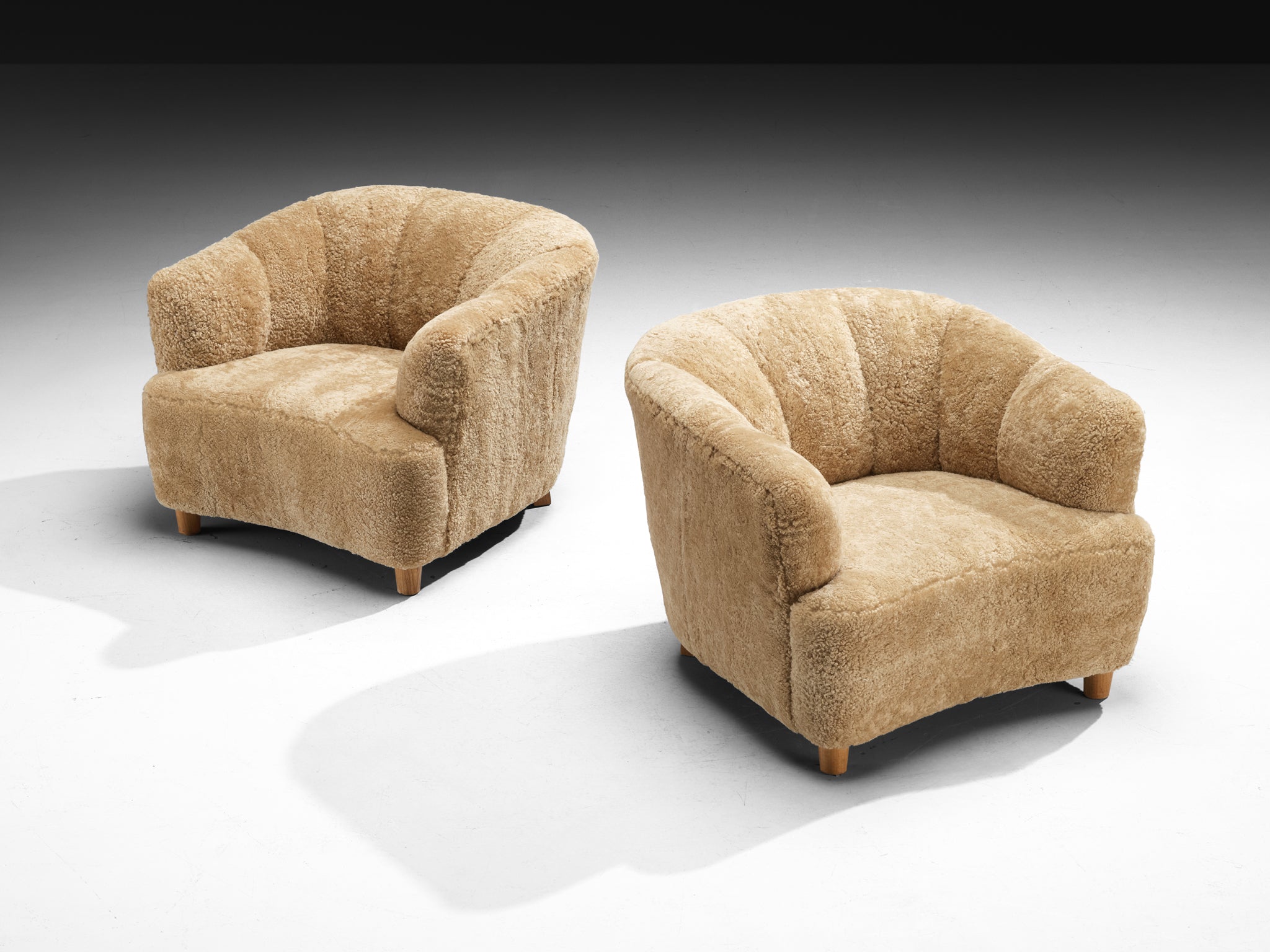
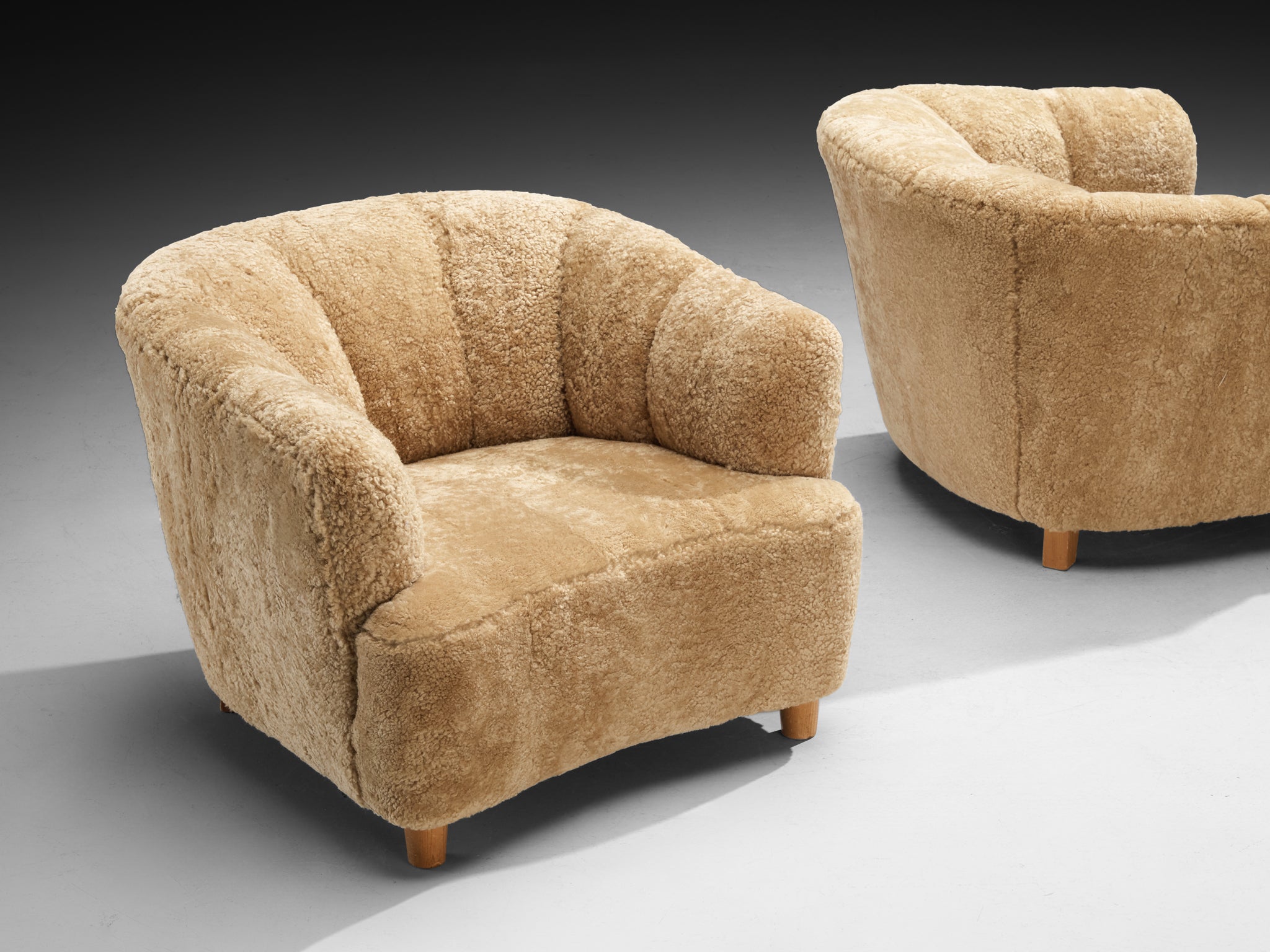

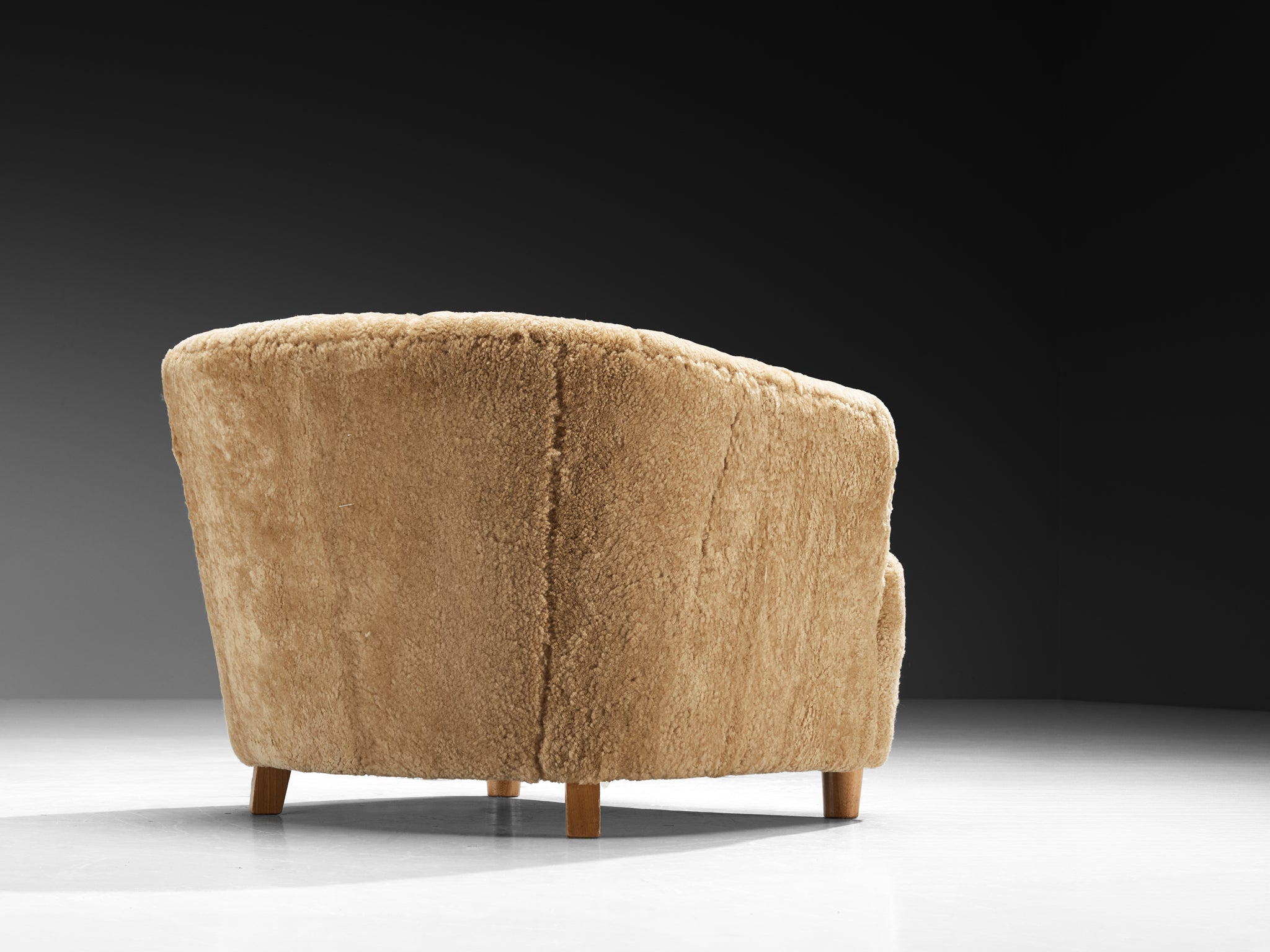
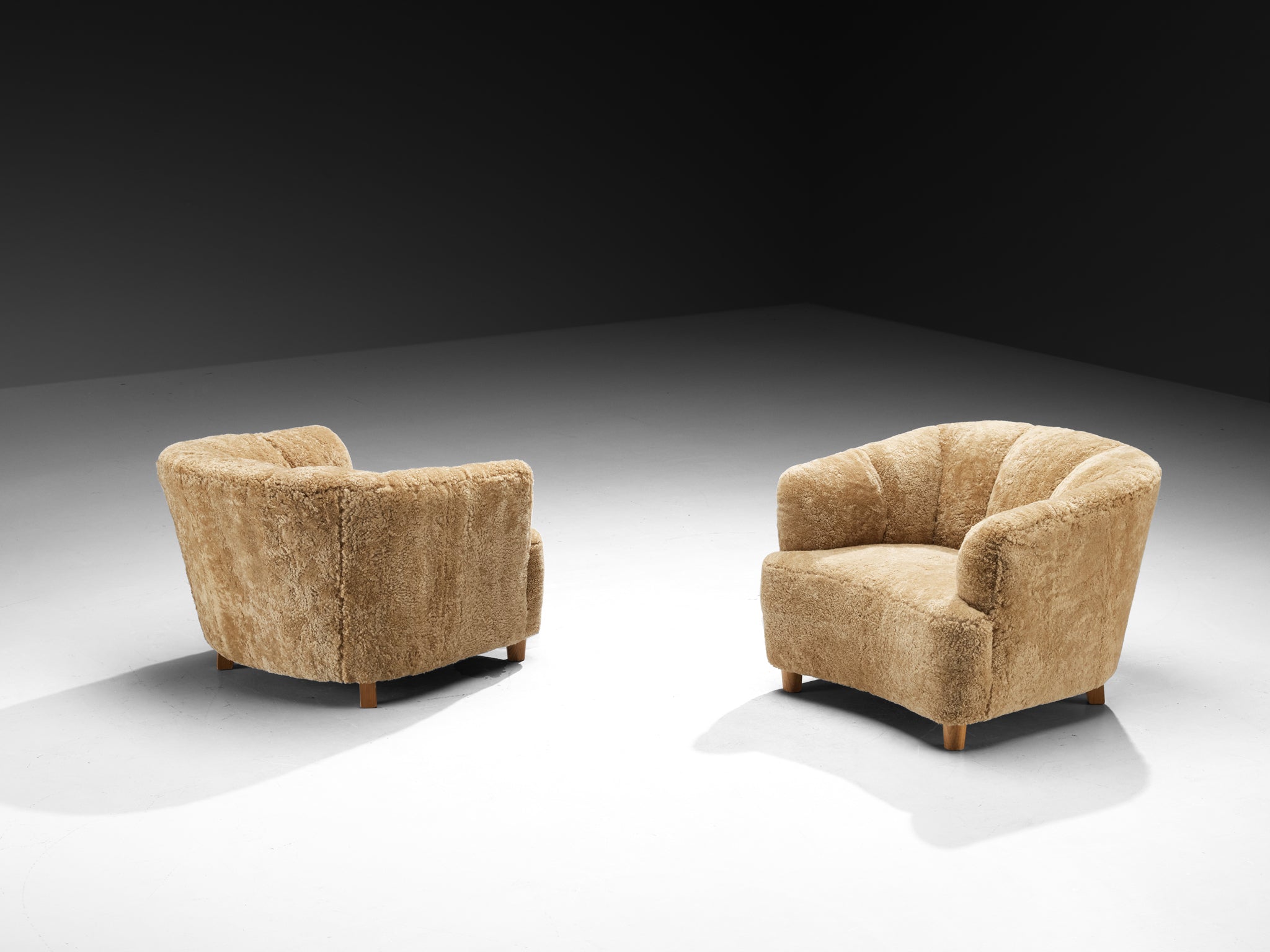

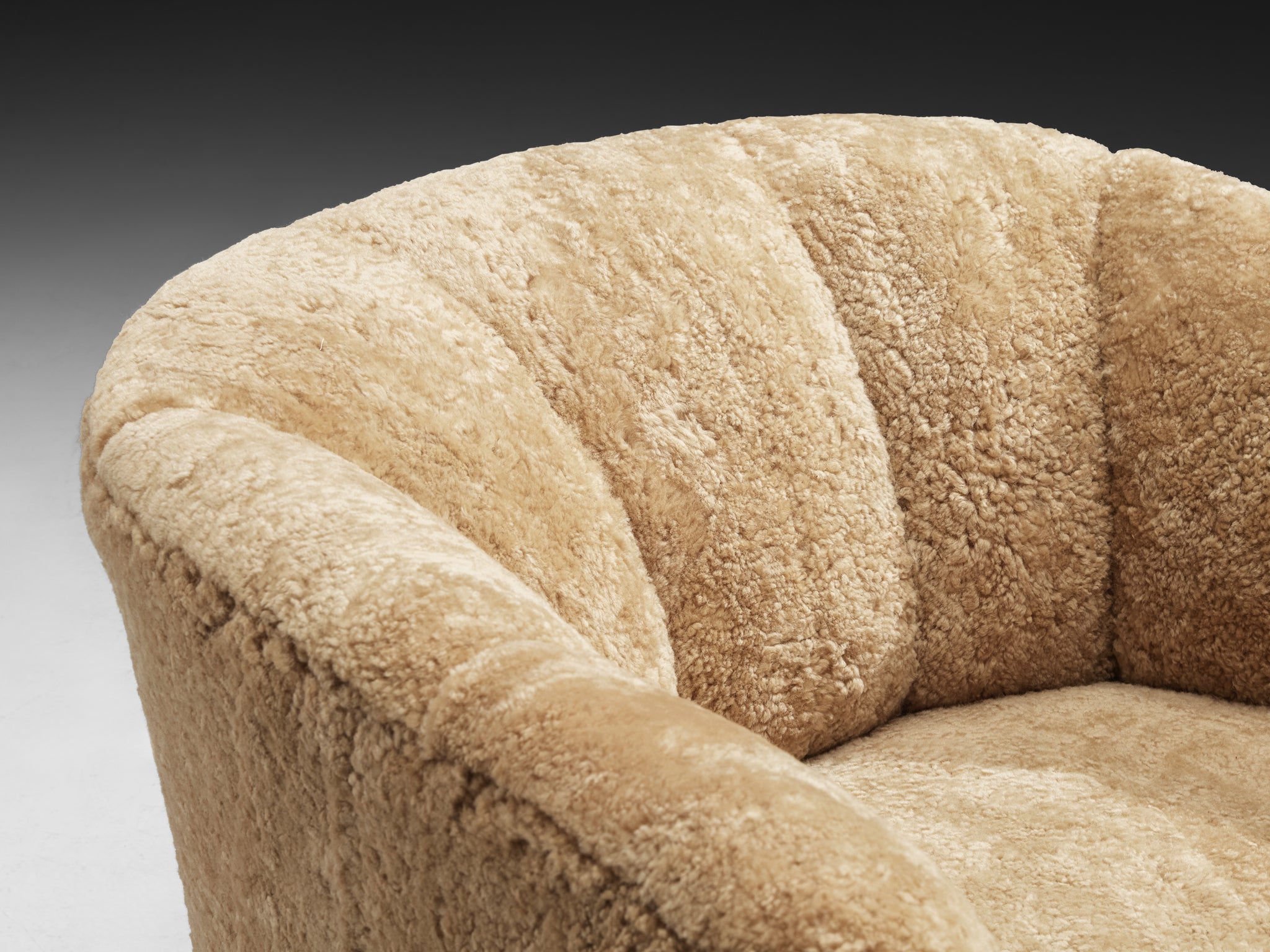
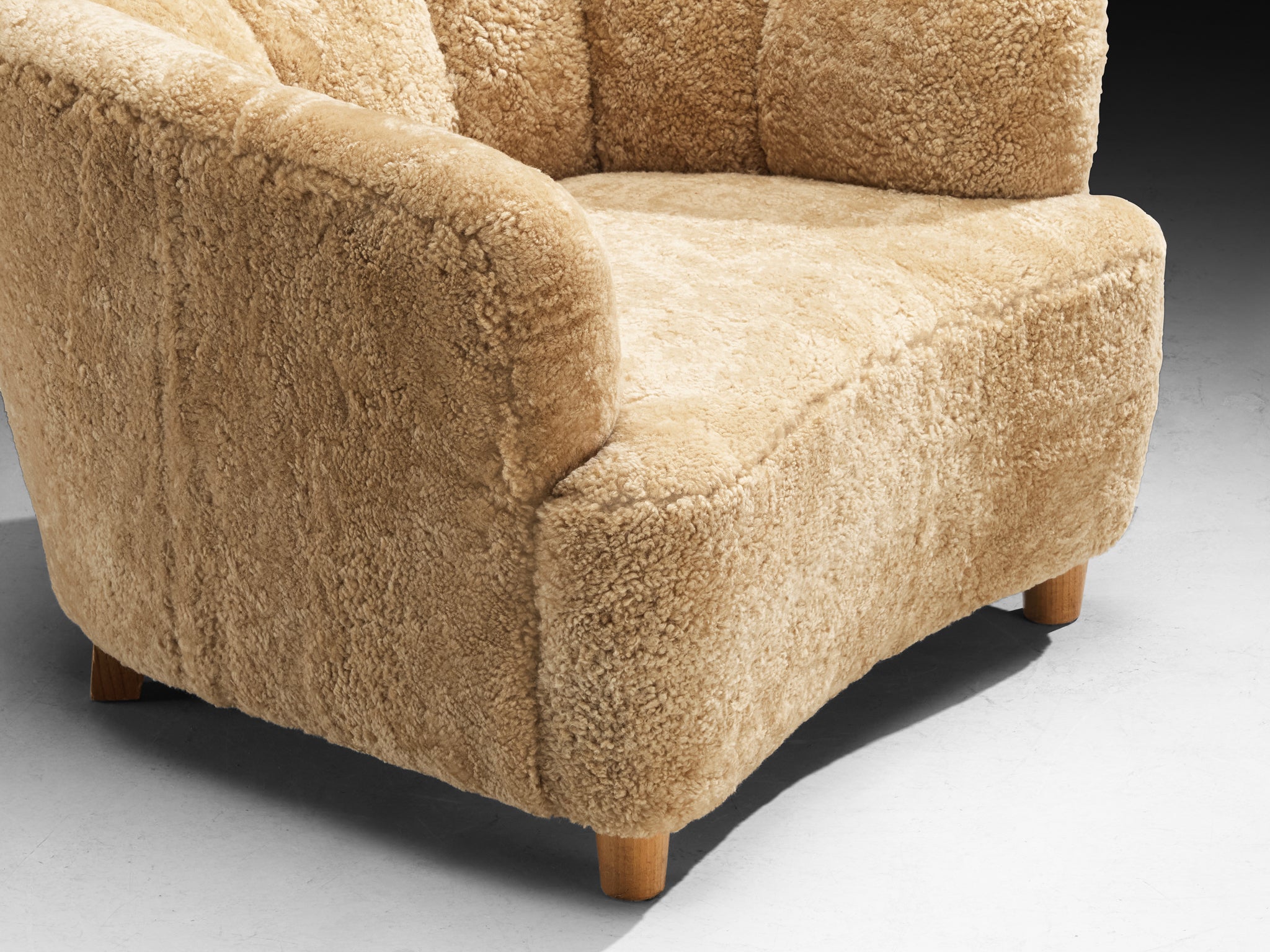
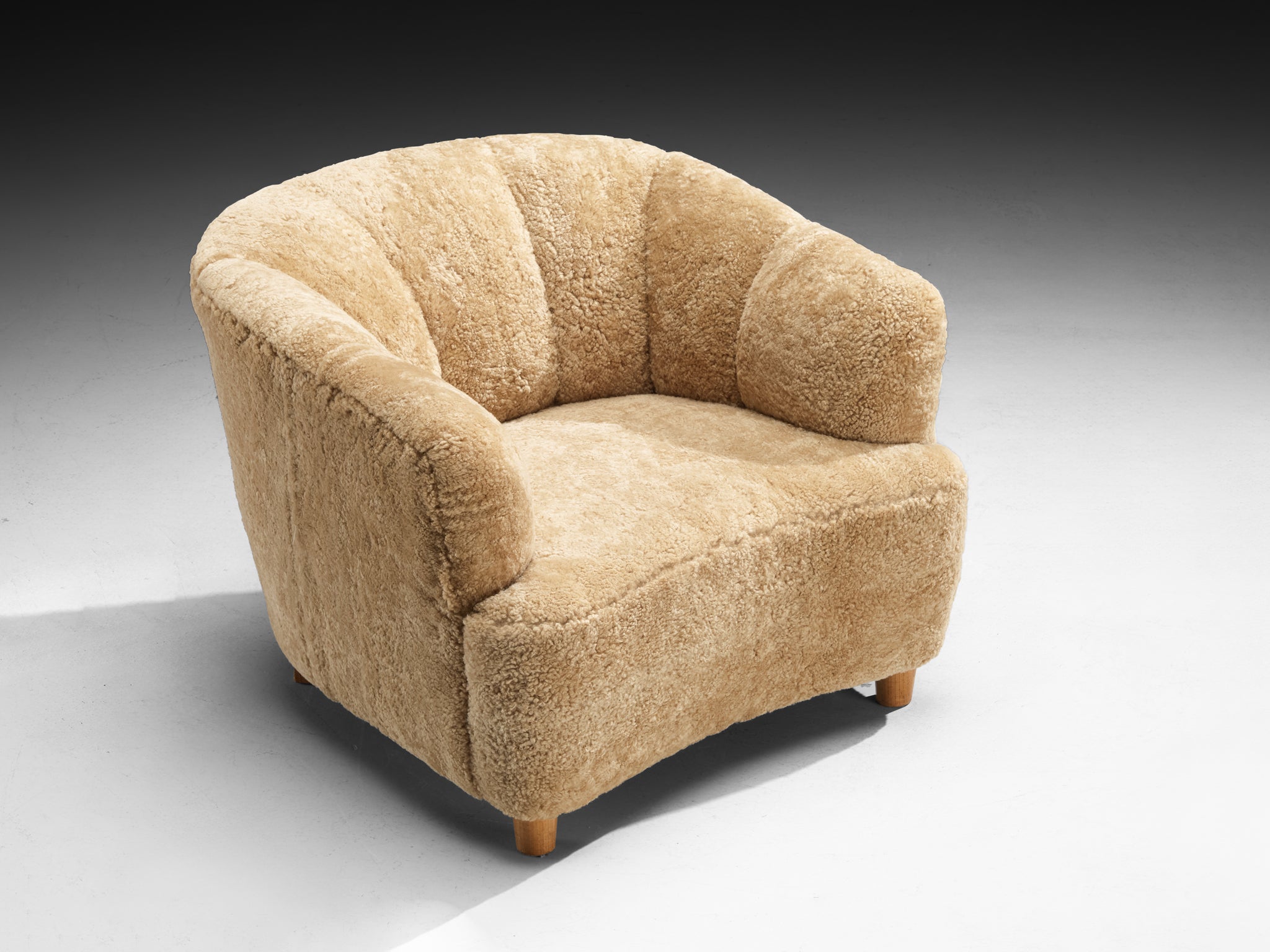
Otto Schulz for Boet Pair of Lounge Chairs in Beige Sheepskin
Otto Schulz for Boet, pair of easy chairs, reupholstered in beige sheepskin, ash, Sweden, 1940s
These armchairs, designed by the illustrious Swedish designer Otto Schulz and produced by Boet in the 1940s, are exemplary of Swedish elegance. Their proportions, refined curvature, and high-quality materials culminate in a design that exudes sophistication and grace. The backrest, with its crescent shape and spiral piping, resembles the appearance of a shell. This design element imparts an inviting aesthetic to the piece, subtly echoing organic forms. The differently designed feet are characteristic of Schulz's designs; the front legs are conical, while the rear legs are tapered and rectangular. The seat is substantial, and the construction robust, ensuring maximum comfort without compromising on elegance. Recently reupholstered in a plush beige sheepskin, their cozy and inviting character is further underscored. These chairs are a splendid addition to any interior, combining historical significance with timeless style.
In central Gothenburg, one of Sweden’s most exclusive interior design shops, Firma Boet, was established during the interwar period. The store was founded in 1920 by the architect Otto Schulz, together with the Stockholm architect Adolf Nordinberg. Boet soon developed into a fully-stocked store with competitors in Sweden, and within a few decades, the shop was comparable – but also competitive – with the furnishing department at Nordiska Kompaniet or Firma Svenskt Tenn in Stockholm. In his solo efforts, Schulz continued to develop furniture designs that adapted to the changing times, and in relation to the trends of leading firms of the time, such as Swedish Grace during the 1920s and the Swedish Modern movement from the 1930s onwards. Schulz repeatedly emphasized his position as owner and artistic leader for Firma Boet. Schulz was also recognized for creating designs and individual furniture pieces featured in the firm’s magazine, Boet. However, it is likely that many other employees played a crucial role in supporting and boosting the production capabilities of the company.
The magazine Boet was a monthly magazine for home culture, crafts, and industrial art, published monthly from 1928 to 1938, with a special anniversary issue in 1945. The magazine primarily featured photographs and editorial texts about Firma Boet’s furniture and interiors, but it also contained a number of articles, reviews, and commentary. Boet enlisted a diverse group of contributors, including museum curators, theorists, critics, architects, craftsmen, designers, and representatives from the art industry. Many of these writers were actively involved in Gothenburg's cultural scene. They explored Boet from various angles, covering topics such as advancements in furniture design, architecture, interior decor, lighting, formal events, lighting fixtures, wallpapers, textiles, modern paintings, tapestries, decorative arts, and table settings.
Otto Schulz (1882-1970) was a German designer and architect schooled at the Technical University in Berlin-Charlottenberg and the Architectural School in Berlin amongst others. The majority of his career was however spent in Sweden. He worked as a draftsman and interior designer for several years after his arrival in Sweden. In 1920, he founded Boet together with Adolf Nordic Borg, the head of Nordiska Kompaniet's design offices, a company that came to be a well-established interior design shop that also published a magazine under the same name. Schulz design was often so inventive, that he patented some of his techniques such as his characteristic decorative brass nail designs referred to as Bopoint. His design is known for its capability to blend traditional elements and techniques with a modern style.
These armchairs, designed by the illustrious Swedish designer Otto Schulz and produced by Boet in the 1940s, are exemplary of Swedish elegance. Their proportions, refined curvature, and high-quality materials culminate in a design that exudes sophistication and grace. The backrest, with its crescent shape and spiral piping, resembles the appearance of a shell. This design element imparts an inviting aesthetic to the piece, subtly echoing organic forms. The differently designed feet are characteristic of Schulz's designs; the front legs are conical, while the rear legs are tapered and rectangular. The seat is substantial, and the construction robust, ensuring maximum comfort without compromising on elegance. Recently reupholstered in a plush beige sheepskin, their cozy and inviting character is further underscored. These chairs are a splendid addition to any interior, combining historical significance with timeless style.
In central Gothenburg, one of Sweden’s most exclusive interior design shops, Firma Boet, was established during the interwar period. The store was founded in 1920 by the architect Otto Schulz, together with the Stockholm architect Adolf Nordinberg. Boet soon developed into a fully-stocked store with competitors in Sweden, and within a few decades, the shop was comparable – but also competitive – with the furnishing department at Nordiska Kompaniet or Firma Svenskt Tenn in Stockholm. In his solo efforts, Schulz continued to develop furniture designs that adapted to the changing times, and in relation to the trends of leading firms of the time, such as Swedish Grace during the 1920s and the Swedish Modern movement from the 1930s onwards. Schulz repeatedly emphasized his position as owner and artistic leader for Firma Boet. Schulz was also recognized for creating designs and individual furniture pieces featured in the firm’s magazine, Boet. However, it is likely that many other employees played a crucial role in supporting and boosting the production capabilities of the company.
The magazine Boet was a monthly magazine for home culture, crafts, and industrial art, published monthly from 1928 to 1938, with a special anniversary issue in 1945. The magazine primarily featured photographs and editorial texts about Firma Boet’s furniture and interiors, but it also contained a number of articles, reviews, and commentary. Boet enlisted a diverse group of contributors, including museum curators, theorists, critics, architects, craftsmen, designers, and representatives from the art industry. Many of these writers were actively involved in Gothenburg's cultural scene. They explored Boet from various angles, covering topics such as advancements in furniture design, architecture, interior decor, lighting, formal events, lighting fixtures, wallpapers, textiles, modern paintings, tapestries, decorative arts, and table settings.
Otto Schulz (1882-1970) was a German designer and architect schooled at the Technical University in Berlin-Charlottenberg and the Architectural School in Berlin amongst others. The majority of his career was however spent in Sweden. He worked as a draftsman and interior designer for several years after his arrival in Sweden. In 1920, he founded Boet together with Adolf Nordic Borg, the head of Nordiska Kompaniet's design offices, a company that came to be a well-established interior design shop that also published a magazine under the same name. Schulz design was often so inventive, that he patented some of his techniques such as his characteristic decorative brass nail designs referred to as Bopoint. His design is known for its capability to blend traditional elements and techniques with a modern style.
Choose options









Otto Schulz for Boet Pair of Lounge Chairs in Beige Sheepskin
Sale price$26,400.00
Regular price
Tearsheet
Product Details
VAT within the EU: When buying or delivering an item within the EU, VAT usually applies and will be added.